To understand the basic principles of color psychology you need to have some knowledge of how colors can impact the brain development of your child. Colors primarily affect bodily functions, the human mind, and emotions with the energy produced by the sunlight. Various research studies conducted by top-most psychologists clearly show the benefits of colors especially when it comes to the development of the brain, creativity, productivity, and learning. Whether it’s a child or an adult, the effects of color on human beings can trigger various emotions causing excitement, lending a sense of calmness, giving inspiration, raising anxiety or stress. Moreover, you can easily study these effects in kids.
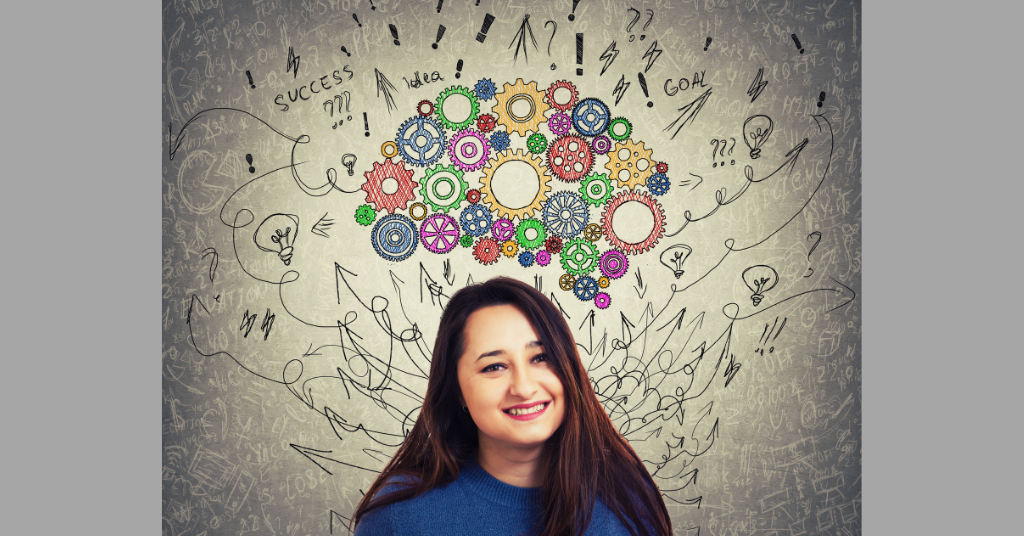
Therefore, for this reason, you must choose appropriate colors for kids. For instance, using an impactful and intense color like red in the room of an anxious child can make them tenser. So you must opt for cool colors like green or blue as they will bring peace and calmness. However, if a color like red is used around a very active child, the combination could make the child excessively active all day long.
And this could also impact their educational success negatively. Therefore, it is advisable to use colors like green, blue or purple. With this basic knowledge in mind, we will talk about how can color psychology play a key role in altering the emotions of your kids.
Related Article: Explore the Mystical World Of Painting Classes in Bangalore
How Does Color Psychology Affect Kids?
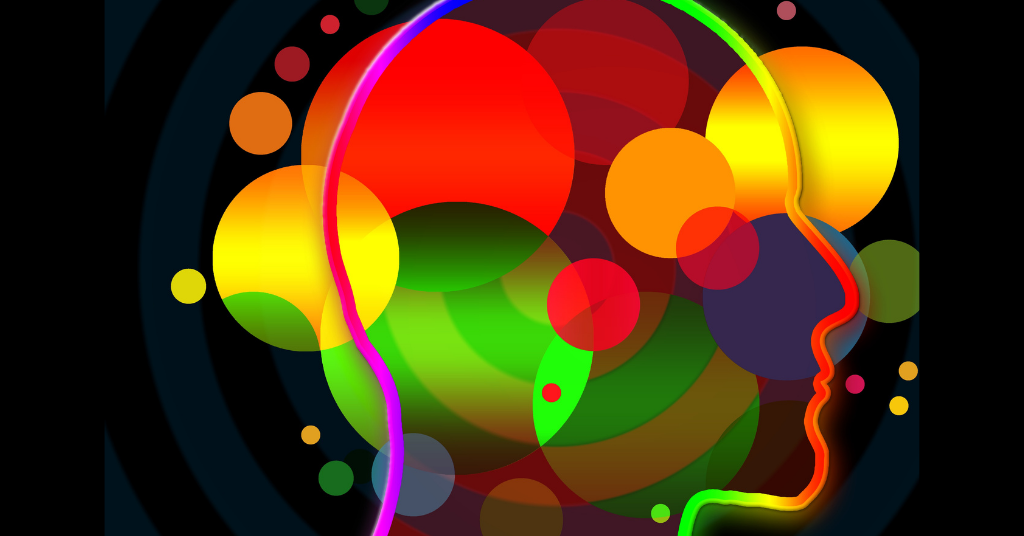
Apart from affecting our mood, emotions, and actions, color psychology can also affect the overall ambiance of space no matter how big or small, cold or warm it is. Colors are mostly used as a tool by kids to express themselves creatively including their feelings and thought processes. And for this reason, it becomes very important to educate children that how color psychology can enhance their creativity and imagination. And for this reason, various online art classes serve as an important medium. Scientifically it is observed that sight development in kids starts right after the 6th month and it continues till the age of 10.
As we know that sight is one of the most important senses that help us to connect to the world around us. Furthermore, both light and color can have an astonishing effect on kids. The human eye is capable of perceiving 150 different colors in visible light. This means that an individual with normal sight can easily differentiate between millions of colors.
Kids are very smart and creative because they can easily use their senses to facilitate communication with their environment. They are capable of using their sense of sight with light and colors and use it effectively to communicate. Moreover, as per some research studies, color psychology is of critical importance for kids as it aids in the development of cognitive as well as motor skills in children.
Impact of Color Psychology on Kid’s Mood
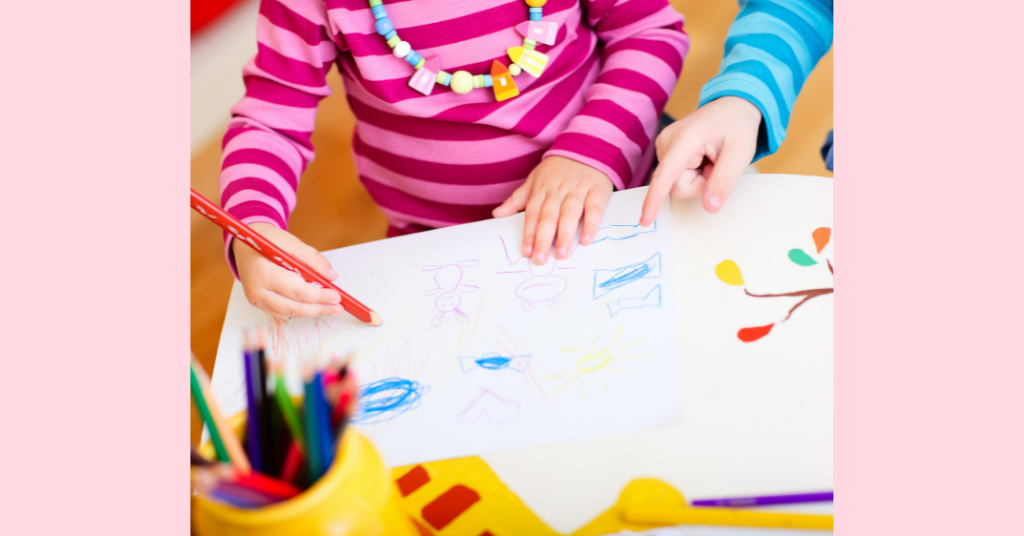
One can easily connect colors to different moods and impressions. Every color represents something or the other. Human age also affects perception and affinity towards a particular color. Kids are more drawn to colors that are bright like- red, yellow, green, blue, and pink. Such colors can help in creating a sense of positive energy and playfulness. These colors also radiate happiness. Once the child starts growing up their color preferences also change. We are likely to be drawn more towards calming colors like pastels and matte.
So, let’s take a look at all the colors individually and what do they signify.
1. Red
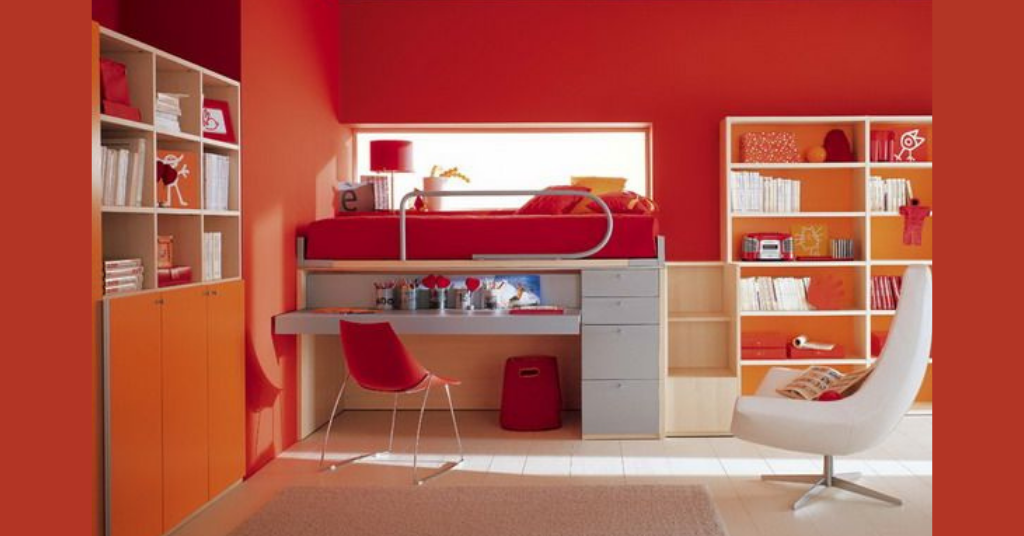
Red is one of the most dominant choices in color psychology. It showcases the power and a strong stimulus. While some scientific studies have shown red to create a more stimulating effect on our visual activity. It is capable of attracting all the attention and can easily distort the effect of other colors. And this is the reason why the red color should never be used on the walls of your kid’s bedroom.
Rather than using the color directly, you can use it as an accent in a kid’s room in tones of beige, blue, and brown. You must also avoid red color for your child’s room who wants to study or play with his/her friends or even sleep in because it can create a negative effect on your child. The color has the potential to make your kids feel more angry and tense.
2. Yellow
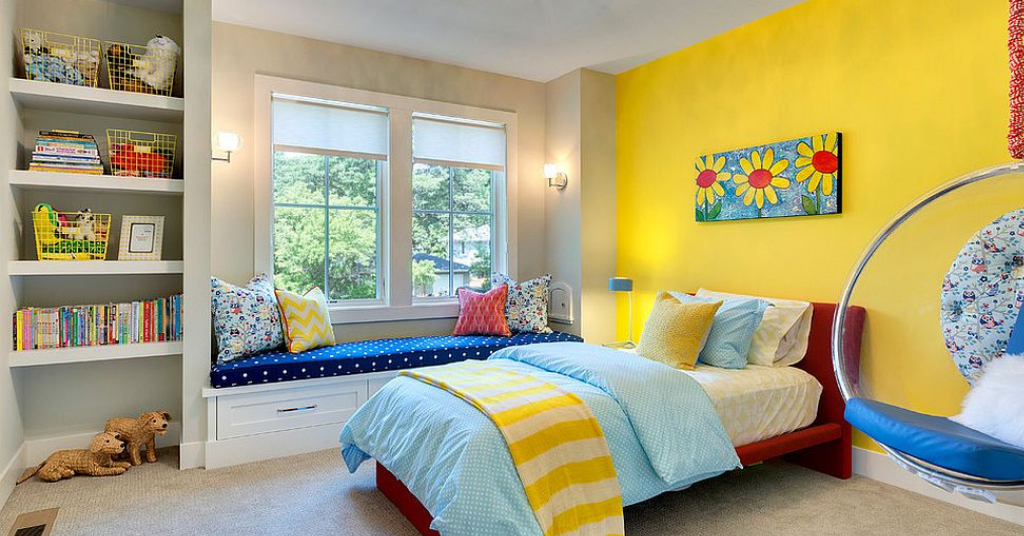
Unlike red, yellow is the most joyful color for your child. The color is connected with concentration. By using the color yellow in your kid’s room you tend to create an attentive atmosphere that can play a key role in memory stimulation. The color yellow represents wisdom-, and kindness. It further helps in radiating warmth, joy, enthusiasm, fun, and inspiration.
When seen symbolically, yellow also represents mental and spiritual well-being. Given the positive that yellow color affects memory, motivation, and attention the color is a suitable choice for a kid’s bedroom. However, some studies reveal that the intense use of the color yellow can make your baby cry. So, if you are planning to use yellow color in your baby’s room try to use it with different cool colors like blue or green.
3. Blue
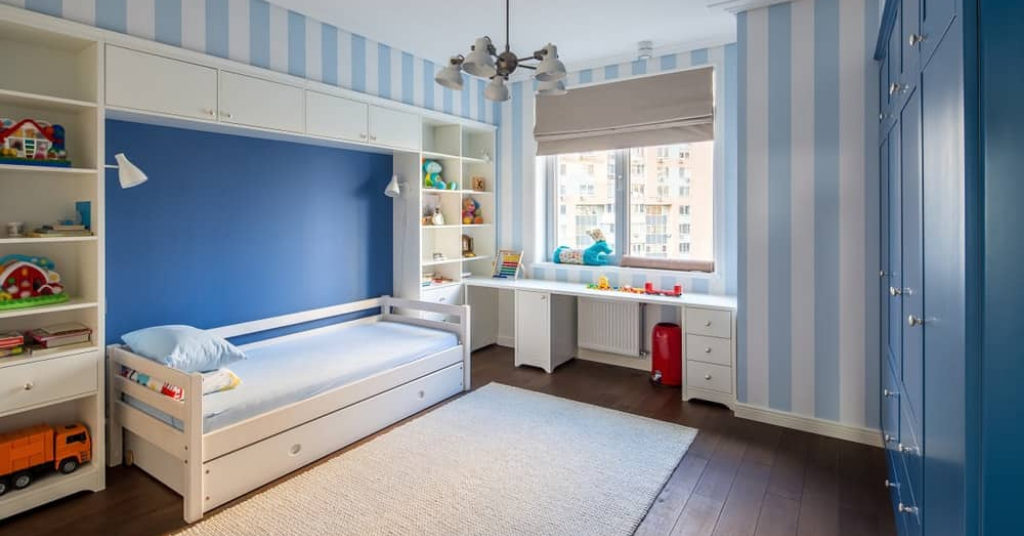
Blue is the complete opposite of red color. While blue is transparent red is more opaque. Psychologically speaking, the cold and comforting nature of the blue color is the total opposite of the warmth and excitement created by the red color. When compared to the color red, blue plays a key role in lowering body temperature, blood pressure, and pulse rate.
The blue color also invokes feelings of contentment, spaciousness, and comfort just like the sky and the ocean. Perhaps blue is the most preferred color choice that should be used in the kid’s bedroom. Even in nurseries, the use of blue color plays a crucial role in helping the baby to be at ease and peace. You can easily use the blue color with active and vibrant kids due to its cooling and calming effect.
4. Green
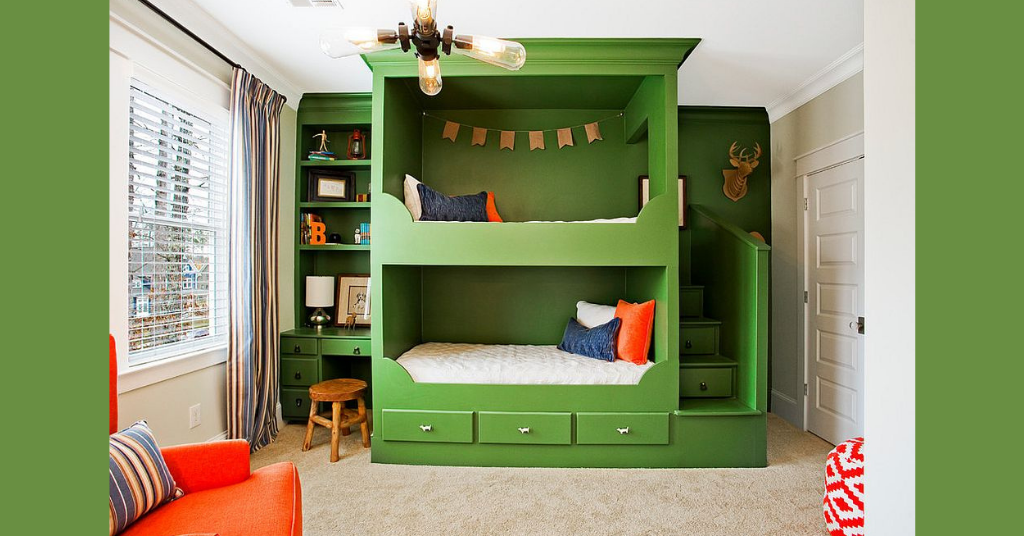
Just like the blue color, even the green color comes with a lot of healing and therapeutic properties. Psychologically speaking, the color green represents health and offers a calming and soothing effect on the nervous system. In case your child is not able to sleep properly, you must use green in their bedroom.
Furthermore, the green color helps in improving concentration and also increases the reading and comprehension skills of the kids. It also represents growth and nature. If possible, you must use different shades of green to paint the room your child as it will motivate them to do better and excel in their studies and will also make them calm and poise.
5. Orange
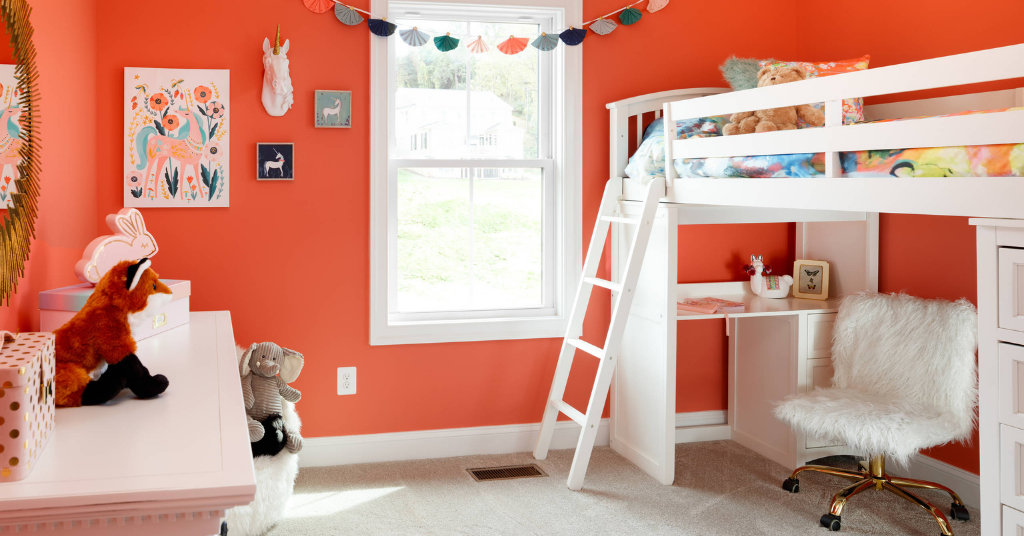
Another underrated option from color psychology is the orange color. It is softer and simpler in comparison to the color red. Orange represents happiness, sociability, extrovert nature, joy coupled with the excitement of red and the healing energy of yellow. The ideal color for overcoming stress and tiredness.
It further radiates warmth, helps in increasing appetite, and has the potential to wake you up early in the morning. For kids who are introverts, this color would be a perfect addition to their rooms. Orange is a magical color and it is also used for physically representing self-confidence, independence, and competition to a certain extent.
6. Pink
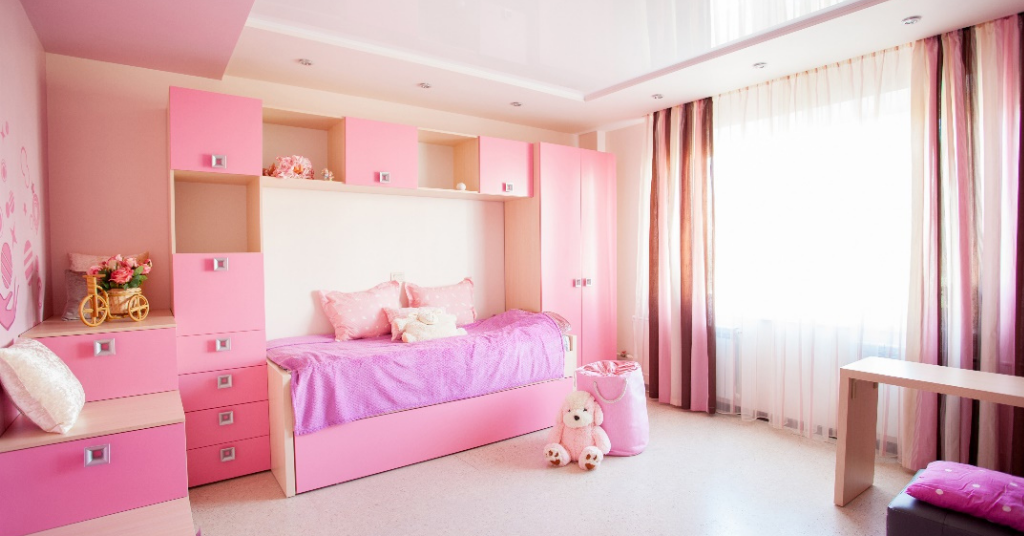
When red and white are mixed pink is what you get as a result. The color pink positively affects us. Pink is psychologically a strong color. It is also used for the representation of femininity. The color offers a deep soothing effect. Be very careful when using the color in your kid’s bedroom.
Too much pink color should not be used in the rooms of kids who are shy and introverted because it is not an energetic color. It can result in the further withdrawal of the kids who are not social. However, you can use pink with lesser undertones of red color in rooms with active and energetic children. Pink can be used for invoking the feeling of warmth and peace.
7. Purple
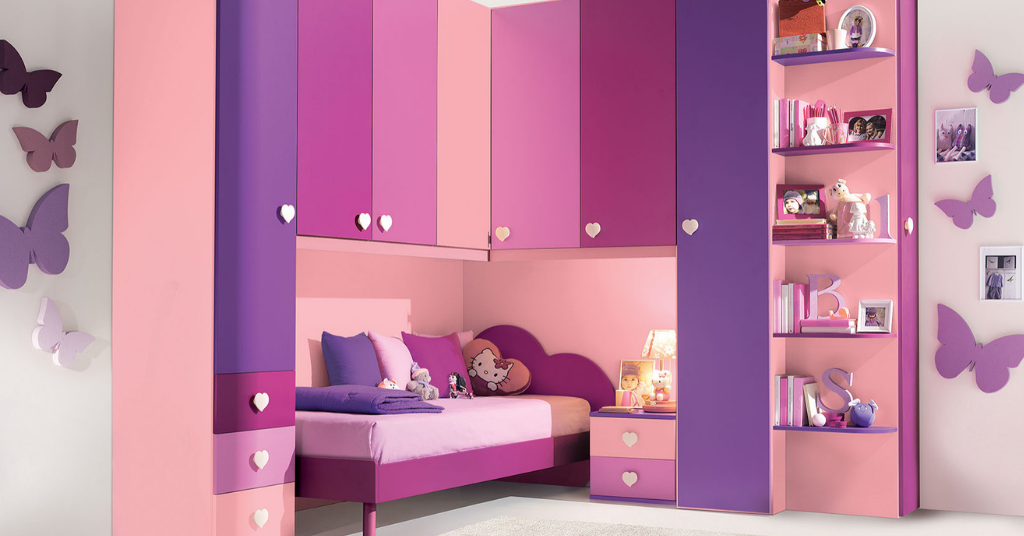
The color purple stimulates that part of the brain which primarily focuses on creativity. And at the same time, it also offers a calming effect. Purple is a popular choice among kids and you can easily use this color in the rooms of preschool children as they are actively involved in different creative activities. And this factor also contributes to the overall physical and spiritual well-being.
Related Article: Explore The World Famous Paintings With Hidden Meanings
Takeaway
Colors have an integral role in the lives of human beings. The best way to introduce your kids to the world of color psychology is by making them aware of the importance of every color and which will be the most appropriate choice for them. You should use cool colors like blue and green as it offers immediate relaxation. You must avoid painting your kid’s room with dark colors because they can push your kids towards gloominess, stress, and anxiety.
Rather you must surround your kids with happy and bright colors like yellow, orange, and pink as these colors radiate happiness and positivity. We human beings are very lucky to appreciate the true value of colors and the beauty it adds to the world we live in.
Therefore, the best way to make your kids fall in love with colors is by enrolling them in online painting classes. PiggyRide offers the best and the most interactive online art and craft classes for your little ones. So get ready and enroll your kids in our online painting classes and let them create a colorful stroke!


Leave a Reply